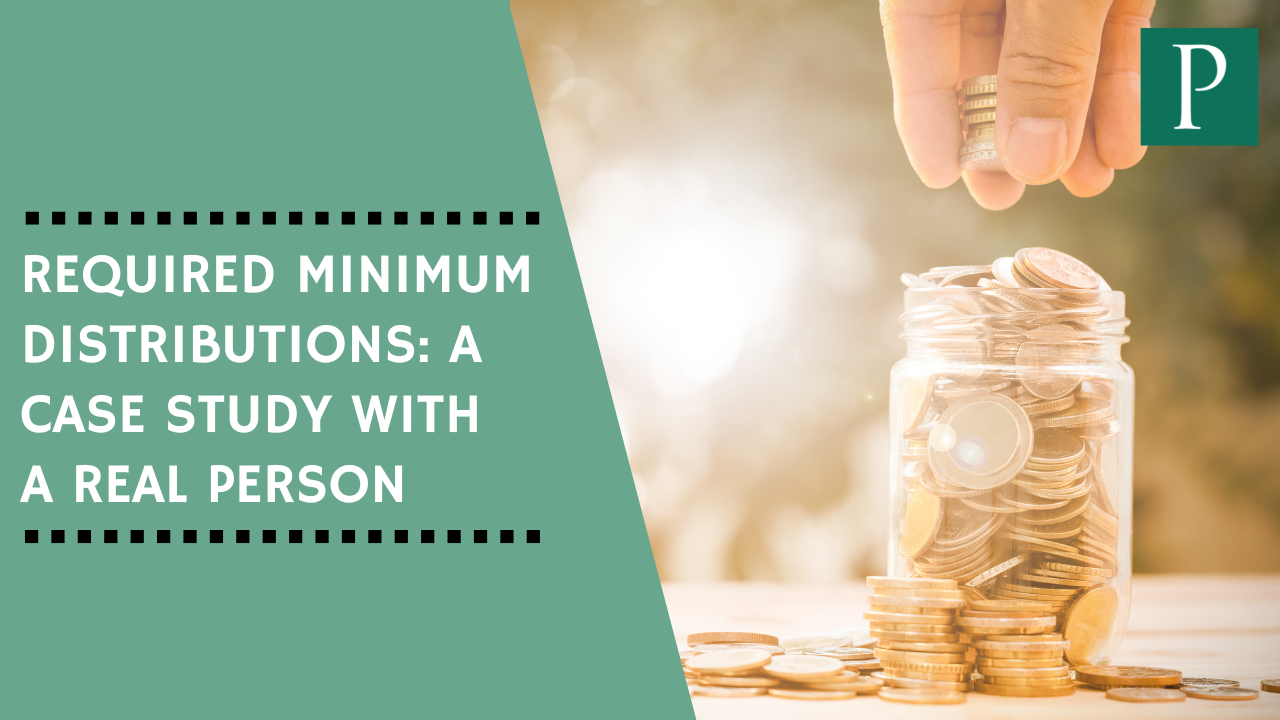Required Minimum Distributions: A Case Study with a REAL Person

By Mary Walker, Petrus Blog Contributor
Cecilia (not her real name, but everything else is true) is an energized Catholic. She aims to
attend daily Mass and give her time, talent, and treasure to help others. She owns and maintains
her own home, and her son is “launched,” earning his own way in the world.
An accountant by profession, she retired 10 years ago at age 62 because that was the age of her
mother when she died. The decision to retire came after much prayer and discernment. With the
retirement plan from her job plus social security, Cecilia more than covers her expenses. In
addition, she has a traditional IRA, but because she doesn’t need those funds to live, she lets the
IRA money continue to grow.
Often, our senior benefactors, like Cecilia, view their IRAs as nest eggs—they don’t need the
available funds to live on, but they like having extra money for future expenses. However, when
they reach age 72, they MUST start withdrawing from the IRAs, and pay the applicable income
tax on the growth.
This year Cecilia turned 72. With her accounting background, she knew that she would have to
start taking out a minimum amount of money each year from her traditional IRA. The amount is
called a Required Minimum Distribution, or RMD. If she doesn’t withdraw this amount, she is
subject to a 50% tax penalty on the difference. At this time, Cecilia’s health is good, and she
doesn’t need that money to meet her needs and wants.
“This was my first year to take an RMD from my retirement IRA. After putting pencil to paper
and talking with my financial advisor, most of the RMD was ‘excess,’ which gives me the
opportunity to make additional charitable donations,” said Cecilia.
Because Cecilia doesn’t NEED the RMD money from her IRA, she is donating most of it to
charity. This gift gives her a sense of joy in knowing that she is helping charities that are near
and dear to her heart. An added blessing is that this generosity reduces her taxes because it
reduces her taxable income.
Basic Information about RMDs
Disclaimer: Unlike Cecilia, I am not an accountant or lawyer. Anybody considering donating all
or part of their RMD should consult their financial advisor for a complete understanding of the
process, timing, and ramifications.
Here are some facts about RMDs from none other than the IRS:
● You can’t keep retirement funds in your account indefinitely. Your required minimum
distribution is the minimum amount you must withdraw from your account each year.
You generally have to start taking withdrawals from your traditional IRA, SEP IRA,
SIMPLE IRA, or retirement plan account when you reach age 72 (70 ½ if you reached
that age before January 1, 2020).
● The required minimum you must take out of a traditional IRA in a given year (RMD) is
calculated based on life expectancy and the amount in your account. The IRS provides a
worksheet here to help you easily calculate this amount.
● If you would like to use these IRA funds to reduce your taxable income and support a
charitable organization, the fund administrator must DIRECTLY send the money to the
organization. You cannot receive the funds first.
● These funds sent directly from a traditional IRA to charity “count” toward the
RMD, but do not count as taxable income. If you itemize, you cannot take this
charitable gift as a deduction.
● RMDs as donations are especially beneficial to those who do not itemize on their
income taxes or who qualify for income-related benefits. The amount of the RMD that
is donated DOES NOT count as taxable income if it goes DIRECTLY from the
account to the charitable organization.
What about Cecilia’s Future?
While she doesn’t need the RMD money this year, that may not always be the case. Health
concerns, an increase in her living expenses, family challenges, or other circumstances may
impact her ability to donate. Each year she plans to revisit the question of how much of her RMD
to donate.
A Bit of Advice from Cecilia
● Your senior years are a great time to do a bit more for your favorite ministries and
nonprofits. It’s a blessing to be able to give, and it’s fun too!
● Early fall is the perfect time for seniors to do their research! They can check the balances
of their IRAs, decide how much of their RMDs they would like to donate, choose their
charities, and contact their plan advisors to get the process going.
● Whether or not one itemizes on their tax returns, using RMDs to make charitable
donations is easy.
● For seniors, reach out to your financial advisor and ask about donating to charity from
your IRA. Financial advisors may be reluctant to suggest charitable giving because they
don’t want to influence your spending. However, they can help you with the process of
directing the funds according to your wishes.
Note to Fundraisers
I can pretty much guarantee that there are some “Cecilias” among your benefactors. Do they
know about giving through their RMD? How can you reach out to them?
I’ve never seen an RMD gift that was less than four figures, and they can be much more. Here’s
a bit of math. Let’s say that the balance of a 72-year-old’s traditional IRA is $200,000.
According to the IRS life expectancy table, the person should divide that by 17.2. The result is
over $11,600—the amount the person must withdraw to avoid tax penalties!
What could your ministry do with even some of those funds?
READY TO BECOME A BETTER FUNDRAISER?
Sign up below to receive tools, ideas, and inspiration to take your development efforts to the next level.
We hate SPAM. We will never sell your information, for any reason.


